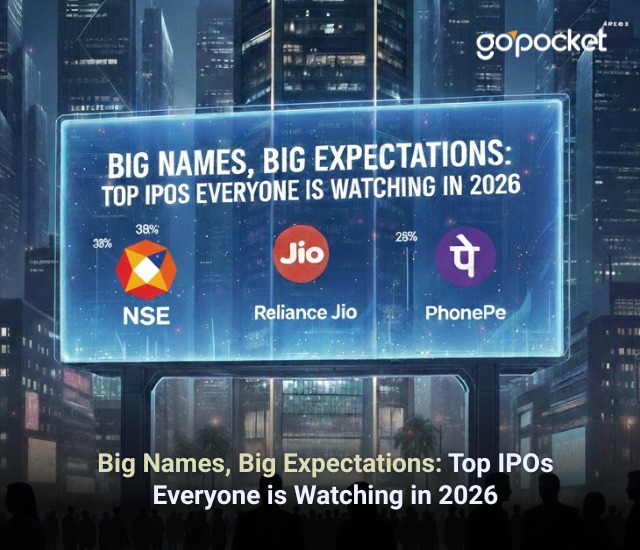
Life is full of moments that require a financial push. It could be the joy of planning a dream wedding, the ambition of renovating your home, the necessity of a sudden medical expense, or the strategic move of consolidating debt. In these moments, borrowing isn't a sign of weakness; it's a financial tool. But like any tool, you need to choose the right one for the job.
You open your browser and start your search. The two most common options that appear are the Personal Loan and the Line of Credit.
At first glance, they might seem similar. Both offer you access to money when you need it. But beneath the surface, they operate on fundamentally different principles. Choosing the wrong one can lead to paying unnecessary interest, facing rigid repayment schedules, or falling into a cycle of debt. Choosing the right one can empower you to achieve your goals efficiently and cost-effectively.
This guide will serve as your compass. We'll move beyond the bank jargon and into real-world scenarios, helping you understand the DNA of each option so you can make a choice that aligns perfectly with your financial situation and life goals.
Chapter 1: The Predictable Planner – A Deep Dive into the Personal Loan
Think of a personal loan as a meticulously planned, all-inclusive package trip. You know the exact cost, the itinerary is fixed, and your payments are scheduled from start to finish. It’s structured, predictable, and straightforward.
What Exactly Is It?
A personal loan is an unsecured loan where a lender gives you a single, lump-sum amount of cash upfront. In return, you agree to pay it back in fixed monthly installments, or EMIs, over a predetermined period (the tenure). This tenure can range from one to seven years.
Because the EMI is fixed, you know exactly how much you need to budget each month, making financial planning simple. The interest rate is also typically fixed for the entire duration.
When Does the Personal Loan Shine?
The personal loan is the hero of planned, one-time expenses.
- Scenario 1: The Home Renovation. You’ve received a final quote of ₹5 lakh from your contractor. You know the exact amount you need. A personal loan gives you that ₹5 lakh in one go to pay the contractor.
- Scenario 2: The Dream Wedding. Your wedding planner has given you a detailed budget. A personal loan provides the funds to cover these known costs.
- Scenario 3: Debt Consolidation. You have multiple credit card bills with high interest rates. You can take a single personal loan to pay them all off and are left with one manageable EMI, often at a lower interest rate.
Calculate your EMI using our EMI calculator
The Search for the Best Rate:
When considering this option, most savvy borrowers immediately start comparing personal loan interest rates. You might find yourself searching for the sbi personal loan interest rate or the hdfc personal loan interest rate to see what major banks are offering. Lenders like Bajaj Finserv and institutions like the Bank of Baroda are also key players in the personal loan market, each with its own set of terms and interest rates. This research is crucial because a lower rate can save you thousands over the life of the loan.
The Not-So-Fine Print:
- Interest on the Full Amount: You start paying interest on the entire loan amount from the day it's disbursed, even if you only spend a portion of it immediately.
- Inflexibility: Once the loan is taken, the terms are set in stone. You can't easily access more funds if you face an unexpected cost overrun.
- Prepayment Penalties: If you come into some money and want to pay off your loan early, most banks will charge a prepayment or foreclosure fee, typically 1-4% of the outstanding amount.
Chapter 2: The Flexible Friend – Unpacking the Line of Credit
If a personal loan is a package trip, a line of credit is like having a credit card with a very high limit, but with the features of a loan. It's not a lump sum; it's access. It's a financial safety net you can use as much or as little as you need.
How Does a Line of Credit Loan Work?
A lender approves you for a specific credit limit—say, ₹3 lakh. This money isn't deposited into your account. Instead, a special overdraft account is opened. You can withdraw funds from this account as and when you need them, up to your ₹3 lakh limit.
Here’s the game-changer: You only pay interest on the amount you've actually withdrawn, not on the total limit.
Let's use an example. You have a ₹3 lakh line of credit for your startup's initial expenses.
- Month 1: You withdraw ₹50,000 to buy a new laptop. You only pay interest on that ₹50,000. Your available credit is now ₹2.5 lakh.
- Month 2: You don't need any funds. You pay no additional interest (only on the outstanding ₹50,000).
- Month 3: You repay ₹20,000. Your outstanding balance drops to ₹30,000, and your interest cost reduces accordingly. Your available credit limit is now back up to ₹2.7 lakh.
When Is a Line of Credit the Perfect Fit?
A line of credit excels in situations marked by uncertainty and fluctuating needs.
- Scenario 1: Ongoing Medical Treatment. A family member requires treatment over several months. You don't know the exact costs of future tests, consultations, and medicines. A line of credit allows you to pay bills as they come, without borrowing a large, intimidating sum upfront.
- Scenario 2: Freelancer or Small Business Owner. Your income is lumpy, and you need to manage cash flow gaps between projects. A line of credit can cover operational costs during a slow month and can be paid back as soon as you receive a client payment.
- Scenario 3: An Unpredictable Home Repair. You have a persistent leak, and the contractor isn't sure of the full extent of the damage until they start work. A line of credit provides the peace of mind to handle whatever costs arise.
The Advantages and a Word of Caution:
The biggest pros are immense flexibility, cost savings (since you only pay interest on what you use), and the absence of prepayment penalties. You can repay the borrowed amount anytime your finances allow.
However, this flexibility comes with a responsibility. The easy access to funds can tempt you into overspending on non-essentials. A line of credit requires financial discipline to be used effectively.
Chapter 3: The Head-to-Head Showdown: Personal Loan vs. Line of Credit
Let's put them side-by-side in a clear comparison table.

Chapter 4: The Decision Framework: Which One Is Truly for You?
To make the right choice, ask yourself these three critical questions:
1. How certain are you about the amount you need?
- Highly Certain: "I need exactly ₹4 lakh for my car's down payment." -> Personal Loan is your champion. It’s tailor-made for this.
- Highly Uncertain: "The doctor said the treatment could cost anywhere between ₹1 lakh and ₹3 lakh over six months." -> Line of Credit is your safety net.
2. What does your repayment capacity look like?
- Stable & Predictable: "I have a fixed monthly salary and prefer a consistent EMI that I can budget for." -> Personal Loan provides this discipline.
- Variable & Lumpy: "I'm a consultant. Some months are great, others are slow. I want to pay back a large chunk when I get paid for a big project." -> Line of Credit offers this repayment freedom.
3. What is your financial personality?
- The Disciplined Saver: "I am very structured with my money and won't be tempted to overspend." -> You can handle either, but the fixed nature of a personal loan aligns well.
- The Spontaneous Spender: "If I have easy access to credit, I might use it for things I don't really need." -> Be cautious. A Personal Loan might be safer, as it imposes discipline and prevents impulse borrowing.
The Bigger Picture: From Smart Borrower to Savvy Investor
Choosing the right borrowing instrument—whether it's a Bank of Baroda personal loan with a competitive interest rate or a flexible line of credit—is a crucial step in managing your finances. It's about handling your immediate needs intelligently.
But true financial freedom isn't just about managing debt; it's about building assets. Every smart financial plan has two sides: managing liabilities (what you owe) and growing assets (what you own). While a loan helps you bridge a gap today, investing is what builds the foundation for a future where you may not need to borrow at all.
This is where the vision expands. Once you've secured the funds for your immediate goal, the next question should be: "How can I grow my money for my long-term goals?"
GoPocket Demat account
This is where a platform designed for wealth creation becomes essential. While you handle your liabilities, you need an equally powerful tool to handle your assets. A GoPocket Demat account is precisely that tool. It’s your gateway to the world of investing—stocks, mutual funds, and more. It's the platform that empowers you to build the asset side of your financial life, turning your savings into wealth and your dreams into reality.

Conclusion:
There is no single "better" option between a personal loan and a line of credit. There is only the option that is better for you. By understanding the core mechanics of each and honestly assessing your needs, your cash flow, and your personality, you can borrow with confidence.
Make an informed choice. Handle your immediate need effectively. And then, take the next step. Shift your focus from borrowing for today to investing for all your tomorrows.
"Investments in securities market are subject to market risks. Read all the related documents carefully before investing."
What's Trending
October 31, 2025
Recent Blog
Open Your Demat Account in Under 5 Minutes
Have any queries? Get support
Blog
Recent Blogs

Open your GoPocket Account within 5 minutes.
Have any queries?






.jpeg)


.jpeg)





